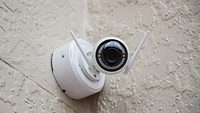Balancing efficiency and accuracy in hospital metal detection

Image via Unsplash
The foremost goal of healthcare professionals is to provide care and aid to those in need. Sadly, as the frequency of workplace violence in hospital settings continues to rise, it has become all too common for healthcare workers to face violence or compromised safety while on shift. This unacceptable reality should not be normalized.
Historically, behavioral health centers such as acute psychiatric settings had a higher incidence of violence. However, in the present day, workplace assaults occur across the entire healthcare industry, with the majority of assaults being from patients and their families. Registered Nurses (RNs) nationwide report a 20% increase in workplace violence since November 2020.
Given the high stakes, hospital security must be vigilant about who is granted access to the premises. Violence undermines both the safety of healthcare workers and the ability of healthcare organizations to carry out their primary goal of providing care and assistance to those in need.
What constitutes a weapon in a hospital?
As the public carry of weapons continues to increase, hospital campuses are not immune. Precisely defining what a weapon is and how it is used can assist hospital security personnel in identifying potential threats and implementing appropriate risk mitigation strategies. Weapons can generally be items that increase the severity of violent incidents. While guns are an obvious concern, other weapons such as knives, box cutters and blunt objects should be considered as well.
The fact is, bladed instruments are far more common than guns. In a study of a large urban healthcare system, researchers discovered that nearly 3% (10,691 weapons) of emergency department visits led to weapon confiscation. 67 percent of the weapons confiscated were bladed instruments, while 0.3 percent were guns.
Prioritizing speed and compromising on accuracy
While guns are a significant concern, focusing solely on guns has contributed to the wrong narrative. The emphasis on guns has led to complementary attention to speed. The high-throughput movement of people in the manner typically associated with 100,000 fans entering a sports stadium en masse within a 90-minute window before a game.
Hospitals are not stadiums, and their need for speed is secondary to their need for safety. Most emergency departments would consider themselves fortunate to see that volume of people in an entire year. These are two distinct scenarios, and the prioritization of throughput may compromise the detection of smaller threats, such as knives, box cutters and razor blades.
Bladed weapons and other similar-sized dangerous items may not be a concern for a large stadium — but for hospitals, they are. Choosing detection technologies and operational procedures that require a little more time, but result in more weapons being discovered and more violence being prevented, is justified vigilance.
While these security measures may initially appear to impede patient throughput and satisfaction, with a well-conceived security plan, the time spent at the entrance need not detract from patient care. In fact, most patients appreciate this vigilance. Considering the risk factors, is it worth sacrificing some level of swiftness for increased accuracy? What do doctors and nurses have to say about it?
How can hospitals prioritize safety properly?
As security leaders continue to focus on hospital safety, it is critical to examine what makes a healthcare organization so vulnerable. If speed is the priority, other threats may be ignored. The risk of bladed weapons is one that can put the lives of healthcare workers and patients in immediate danger.
Unfortunately, workplace violence is a reality in the healthcare industry, but a proactive approach to safety can create a safer workplace. It’s important to include everyone in these conversations, including the nurses and doctors who are experiencing these vulnerabilities. Establish policies and practices that emphasize thoroughness and safety over speed and throughput.
By implementing layered security measures and utilizing detection technologies aligned with desired outcomes, healthcare facilities can protect their staff and patients while still providing a pleasant and efficient patient experience. Ultimately, safety and care should always prevail in the hospital's metal detection decisions.
This article originally ran in Security, a twice-monthly security-focused eNewsletter for security end users, brought to you by Security magazine. Subscribe here.
Looking for a reprint of this article?
From high-res PDFs to custom plaques, order your copy today!








